Sotheby's London presents exemplary selection of Chinese & Japanese works of art
Photo: Sotheby's.
LONDON.- On 13 May 2015 Sotheby’s London will bring to the market an exceptional range of Chinese and Japanese Works of Art. Alongside the biannual auction of Important Chinese Art, Sotheby’s will offer the single owner sale The Soul of Japanese Aesthetics: The Tsuneichi Inoue Collection.
The collection formed by the Tokyo collector Tsuneichi Inoue encapsulates the best of collecting taste in Japan in the early to mid-20th century. This can be seen not only in the significant highlights such as the exceptional early Ming Dynasty blue and facetted vase and the rare Beishoku Guan vase of the Song Dynasty, but also in a number of more modestly estimated pieces throughout the sale.*
Important Chinese Art features Chinese ceramics and archaic bronzes from a distinguished Japanese private collection. Highlights include a rare Early Western Zhou Dynasty archaic bronze ritual vessel, fang ding, a beautifully carved Song Dynasty slip decorated Cizhou meiping vase and a rare Tang Dynasty sancai phoenix-head ewer. The sale is also distinguished by a rare pair of exceptionally carved imperial zitan armchairs from the Qianlong Period.
Robert Bradlow, Head of Chinese Ceramics & Works of Art, Sotheby’s London, commented: “Inoue had the eye and sensitivity of a true connoisseur, as well as the boldness to snap up the best pieces as they came onto the market. These traits enabled him to build up his incomparably precious collection. While it may appear that he assembled it as an academic scholar, as one handles each of these refined objects it is clear that he was attracted not only by their cultural and aesthetic values but also by their essence. This is a collection that tests the sophistication of the viewer, and teaches, in Inoue’s words, “to look for the real thing.”
The Soul of Japanese Aesthetics: The Tsuneichi Inoue Collection
A Painted Earthenware Figure Bust, Dogū, Japan, Jōmon Period. Estimate: £70,000-90,000. Photo: Sotheby's.
the female torso modelled in a frontal pose, the anatomy defined by pointed breasts framed by characteristic rope-cord pattern, the compressed globular head facing forward with wide goggle-shaped eyes and an open mouth, patinated to a chocolate-brown tone with traces of red pigment, fitted stand and Japanese wood box. Quantity: 2 - 19.5cm., 7 3/4 in.
Exhibited: Olympic Tokyo taikai nihon kobijutsu ten [Exhibition of Japanese old art treasures in Tokyo Olympic Games], Tokyo National Museum, Tokyo, 1964, cat. no. 85.
Shinkan kansei kinen tokubetsu tenrankai zuhan mokuroku [Illustrated catalogue of the special exhibition in memory of the new building], Kyoto National Museum, Kyoto, 1966, cat. no. 500.
1969 Spring Special Exhibition, Suntory Museum of Art, Tokyo, 1969, cat. no. 7.
Literature: Teruya Esaka, Nihon no dogu [Clay figures of Japan], Tokyo, 1990, cat. no. 103.
Takeshi Umehara and Makoto Watanabe, Jomon no shinpi ningen no bijutsu Jyomon jidai [The mystery of Jomon: The art of human Jyomon dynasty], Tokyo, 2003, vol. 1, cat. no. 204.
Note: Dogu are earthenware humanoid figurines made during the Jomon period (ca 12,000 BC–300 BC), Japan’s neolithic era. Their origins are quite ancient, dating back to the beginning of the Jomon period, around 12,000 BC. Early dogu were quite simple, little more than a tiny head attached to a torso, but they clearly represented women, with prominent breasts. By the middle of the Jomon period (2500 BC), there was more detailed rendering of facial features, arms and legs were added, and emphatically swollen bellies indicated pregnancy. After this, a variety of forms of dogu were produced, primarily in eastern Japan.
The Jomon period did not have settled agriculture such as cereal production; essentially the economy did not transcend hunting and gathering. But the Jomon people made full use of the bounties of nature and did what they could to expand their sources of food, including learning how to cook various wild plants to make them more palatable. Seeking a more stable existence, they lived communally and conducted village festivals.
Various theories have been advanced concerning the function of the dogu. Since they are often found broken and dismembered when excavated, one theory holds that at least in early times they were used as katashiro, substitutes to rid people of injuries or illness by a process of transference, and then destroyed. The large number of dogu representing pregnant women has lead other scholars to suggest that these figurines were used as talismans to ensure safe childbirth. At present, as more of these figurines have been discovered discarded with other festival implements or as burial goods, it is believed that they were probably used at festivals and other rituals to represent fertility goddesses who brought about the eternal renewal of nature, reflecting the concept of regeneration of people in the Jomon period.
National treasure clay figure Jomon of Venus, Tokyo National Museum.
Dogu had developed in tandem with Jomon-era society, and thus, with the transition to the Yayoi period (ca. 300 BC–AD 300), which brought the cultivation of rice and other grains and the use of bronze, iron, and other metal implements to Japan from the Asian mainland and saw the development of a society centred around settled agriculture, these figurines rapidly disappeared. This very disappearance is probably a major clue in our efforts to understand their function and use.
This particular dogu belongs to a grouping of similar figurines that have been labeled shakoki-dogu (goggle-eyed ceramic figurines) that developed about 2800 years ago during the Final Jomon Period in the northern Tohoku region of Japan’s main island of Honshu, in what are now Aomori and Iwate Prefectures. This naming derives from the resemblance of the large eyes on these figurines to sun goggles that historically have been used by the hunting tribes and peoples of the north. The rendering of the large eyes, the characteristic “Y” shape of the eyebrows, and the patterns on the torso of this figurine all mark it as a classic of this type.
The technique used in its production was the stacking of thin coils of clay to build up a form with a hollow centre; if still intact, the entire figure would have been quite large—perhaps more than 40 cm tall. The central motifs on the figure are rendered in an unusual style typical of this period—surikeshi jomon, or “erased cord-marking.” In this technique, a thin cord or rope is rolled over the surface, leaving an overall pattern formed by its strands. A sharpened horn or bit of bone is then used to incise lines demarcating areas from which the cord pattern is then rubbed off to leave a smooth contrasting surface. The smooth portions have all been carefully burnished, giving them a high luster which has lasted down to the present. The basic tonality of the ground is black, but this is not a glaze; it is the result of a firing method in which oxygen was cut off in the final stages of an open-air firing. Traces of colcothar red are faintly visible over the entire figurine.
The overall impression given by the image is one of a beautifully plump, almost Rubenesque, female form with sloping shoulders unusual in dogu of this period. The ample, somewhat swollen breasts give the figure a maternal strength. It is also the shape of the mouth that gives this piece its unique personality. In many other dogu of this period, the mouth is commonly stylized into a simple circle or oval, but here the lips have a life to them suggesting the figure is speaking to us.
Several other features add to the historical value of this particular figurine: the hourglass-shaped earring suspended from the right earlobe, which has been preserved undamaged, as well as the two parallel vertical lines descending each cheek from below the eyes, which probably represent the tattooing believed to be customary in that era.
Although the lower half of this figure is missing, for reasons touched on earlier, it can still be considered a superb example of the shakoki-dogu that stand as representative works of Japan’s Jomon period.
A Rare 'Beishoku Guanyao' Vase, Southern Song Dynasty, 21.5cm. Estimate: £500,000-700,000. Photo: Sotheby's.
This vase with its highly unusual golden amber glaze and exquisite 'ice flake' crackle represents one of the rarest varieties of Guan wares of the Southern Song dynasty (1127-1279). In order for a vessel to be considered guan ware at all, it requires an exceptional glaze and a striking crackle. The yellow glaze colour, resonant of rare yellow jade, would have appealed to connoisseurs of the period. With its broad base and ever so slightly everted lip, which displays a feeling for proportion that makes Song ceramics models for design even today, this vase is one of the masterpieces of Song potting and a masterpiece of guan ware.
(cf. http://www.alaintruong.com/archives/2015/04/12/31881417.html)
A Rare Blue and White Facetted Vase, Xuande Mark and Period, 13.8cm. Estimate: £200,000-250,000. Photo: Sotheby's.
The Xuande Emperor (r.1426-1435) was a remarkable patron of the arts, which may explain the exceptionally high standard of the imperial porcelains manufactured under his patronage. This facetted vase is a superb example of blue and white porcelain from the Xuande period. It was made in the era of the global voyages (1405-1433) lead by the Muslim Admiral, General Zheng He and follows metal prototypes from the Middle East in shape. Painted with cobalt pigment mined in Persia and brought to China by diplomatic missions, the vase is of a complex geometric shape. Not much more than a century later, during the Jiang period (1522-1566), Xuande porcelains were already overtaking the classic antique wares of the Song dynasty (960-1279). By the time of the Qing dynasty, these blue and white porcelains were so highly valued they were presented as imperial birthday gifts to the Kangxi Emperior (r.1622-1722). Vases of this type are extremely rare, with only five other examples of the Xuande period in museum collections.
(cf. http://www.alaintruong.com/archives/2015/04/13/31887516.html)
A Rare ‘Dingyao’ Slip-Decorated Dish, Northern Song Dynasty, 15.6cm. Estimate: £120,000-180,000. Photo: Sotheby's.
Ding wares with sgraffiato decoration are extremely rare and valuable. The decorative technique, which requires excellent skills and is labour intensive, was seldom used by Ding ware potters. This dish appears to be unique and no other Ding ware dishes or bowls feature a similar sgraffiato design. The lotus blossom and leaf pattern is a characteristic motif of the Ding kilns.
(cf. http://www.alaintruong.com/archives/2015/04/13/31881933.html)
A Large Amber-Glazed Vase, Sui Dynasty, 45cm. Estimate: £50,000-70,000. Photo: Sotheby's.
This rare and finely decorated vase, covered with a glaze which resembles amber, appears to be unique, being the only example of its kind ever recorded.
(cf. http://www.alaintruong.com/archives/2015/04/16/31902989.html)
A Dated Gilt-Bronze Figure of a Bodhisattva, Northern Wei Dynasty, Dated 495. Estimate: £20,000-30,000. Photo: Sotheby's.
cast standing with the right arm raised, wearing long robes falling into neat pleats, the face with a meditative expression with hair piled up into a high chignon, all before a leaf-shaped mandorla incised to the front with flame-like projections, the reverse with a Buddha seated in a temple flanked by two attendants and accompanied with an inscription, all supported on a domed base raised on a four-legged plinth, the side of the base inscribed and dated to nineteenth year of Taihe (corresponding to 495), wood stand and Japanese wood box. Quantity: 3; 11.4cm., 4 3/8 in.
Exhibited: Tokubetsu tenji Rikuchō jidai no Kondōbutsu [Gilt-bronze statues from the Six Dynasties], Kuboso Memorial Museum of Arts, Osaka, 1991, cat. no. 41.
Literature: Saburo Matsubara, Chūgoku bukkyō chōkokushi ron [Historical discussion of Chinese Buddhist sculpture], Tokyo, 1995, vol. 1, pl. 77d-e.
Note: The inscription on this piece may be translated:
Commissioned by… from Lingzhou county [Hebei province] in memory of his brother who passed away.
The 23rd of the 2nd month of the 19th year of Taihe reign [corresponding to AD 495].
The present piece belongs to a distinct group of bronze bodhisattva cast wearing monastic robes draped in the Hellenistic-influenced Gupta style with long looping swathes of cloth rising from the legs and across the shoulders. Compare four bronze figures of this type with Northern Wei dates between AD 482 and 500, illustrated in Saburo Matsubara, Chūgoku bukkyō chōkokushi ron [Historical discussion of Chinese Buddhist sculpture], Tokyo, 1995, vol. 1, pl. 77, no. a, c and f; and another dated equivalent to AD 484, unearthed in Boxing county, Shandong province, and now in the Boxing County Museum, published in Ji Chong Jian, The Buddhist Bronzes, Taipei, 1994, pl. 40.
A Gilt-Bronze Figure of Young Buddha, Japan, Nara Period. Estimate: £6,000-8,000. Photo: Sotheby's.
cast standing with the right arm raised above the head, wearing a long dhoti tied at the waist, the face with a serene expression, flanked by long pendulent ears, the hair piled up to form a chignon, all supported on a circular lotus plinth, fitted wood stand and Japanese wood box. Quantity: 2 - 8.5cm., 3 3/8 in.
A Dated Gilt-Bronze Figure of Buddha, Northern Wei Dynasty, Dated 495. Estimate: £6,000-9,000. Photo: Sotheby's.
cast seated in dhyanasana with arms folded in dhyanamudra, the robes falling into neat pleats, the face with a meditative expression and the hair piled up into a high chignon, all supported on a stepped plinth raised on four feet, the reverse with an inscription dated nineteenth year of Taihe (corresponding to 495), wood stand and Japanese wood box. Quantity: 3 - 8cm., 3 1/8 in.
Exhibited: Tokubetsu tenji Rikuchō jidai no Kondōbutsu [Gilt-bronze statues from the Six Dynasties], Kuboso Memorial Museum of Arts, Osaka, 1991, cat. no. 13.
Note: The production of Buddhist images, in particular small portable figures such as the present piece, proliferated during the Taihe reign of the Northern Wei dynasty. A similar figure of Shakyamuni Buddha seated in dhyanasana on a stepped pedestal is illustrated in Saburo Matsubara, Chūgoku bukkyō chōkokushi ron [Historical discussion of Chinese Buddhist sculpture], Tokyo, 1995, vol. 1, pl. 66, no. b; and another complete with the backing mandorla, in the Osaka Municipal Museum of Art, is published in Rokucho no bijutsu [Arts of the Six Dynasties], Tokyo, 1976, pl. 279.
Compare also two examples attributed to the Southern Dynasties (420-589), the first from the Duan Fang collection, dated in accordance with AD 437, the second with AD 494, illustrated in Osvald Sirén, Chinese Sculpture, New York, [1925] 1970, vol. 2, pls 16a and 16c.
Important Chinese Art

Lot 103. Property From A Japanese Private Collection. A Rare and Magnificent Archaic Bronze Wine Vessel, Fangding, Late Shang-Early Western Zhou Dynasty; 25.5cm., 10 1/8 in. Estimate: £400,000-600,000. Lot sold 2,389,000 GBP. Photo: Sotheby's.
of rectangular section, supported on four tubular legs each cast at the top with taotie and a flange, the sides decorated with taotie in high relief, centred and flanked with flanges, below the lipped rim supporting two looped handles, the interior with a twenty-one character inscription, the olive and light green patina with minor turquoise and ferrous encrustations, Japanese wood box. Quantity: 2.
Provenance: Collection of Jin Futing, 19th century.
Collection of Willem van Heusden.
Mayuyama & Co., Ltd, Tokyo, acquired between 1960 and 1975.
Exhibited: Kodai Chūgoku seidoki meihin ten [Exhibition of ancient Chinese bronze ware masterpieces], Daimaru Osaka-Shinsaibashi, Osaka, 1960, no. 35.
Tōyō kaikan kinen Tōyō bijutsu ten [Exhibition of Eastern art celebrating the opening of the Gallery of Eastern Antiquities], Tokyo National Museum, Tokyo, 1968, no. 244.
Literature: Fang Junyi, Zhuiyizhai yiqi kaoshi, Shanghai, 1935, vol. 4, no. 4.2.
Wang Chen, Xu Yinwencun [Continuation of the surviving writings from the Yin dynasty], 1935, vol. 1, no. 24.
Luo Zhenyu, Sandai jijin wencun [Surviving writings from the Xia, Shang and Zhou Dynasties], 1937, vol. 3, no. 46.3.
Willem Van Heusden, Ancient Chinese Bronzes of the Shang and Chou Dynasties. An Illustrated Catalogue of the Van Heusden Collection, Tokyo, 1952, pls XVIII and XIX.
Ryūsen Shūhō. Sōgyō shichijū shūnen kinen/Mayuyama: Seventy Years, Tokyo, 1976, vol. 2, cat. no. 9
(Inscription) Noel Barnard and Cheung Kwong-Yue, Rubbings and Hand Copies of Bronze Inscriptions in Chinese, Japanese, European, American and Australian Collections, vol. 5, Taipei, 1978, pl. 311.
Minao Hayashi, In Shū Jidai seidōki no kenkyū. In Shū seidōki souran [Research of bronze ware of Shang and Zhou dynasty], vol. 1, Tokyo, 1984, pl. 40.
Jessica Rawson, Western Zhou Ritual Bronzes in the Arthur M. Sackler Collections, Washington D.C., 1990, vol. II B, fig. 1.3.
Wu Zhenfeng, Shangzhou qingtongqi mingwen ji tuxian jicheng [Compendium of inscriptions and images of of bronzes from the Shang and Zhou dynasties], vol. 4, Shanghai, 2012, pl. 2183.
Note: Fang ding are among the rarest ritual vessels of the Bronze Age, and the present piece with its bold taotie mask and powerful shape is an exceptional example that ranks among the most attractive of its kind. Its square form and magnificent size gives this vessel a sense of balance and strength while the green patina which has developed evenly on its surface enhances the striking design.
Food vessels of this square ding form have a long history in China. They were first produced as ceramic food containers in the Erlitou period and were later made in bronze in the Erligang period. In the Shang and Western Zhou dynasties, fang dingwere made for use in ancestral worship or other sacrificial ceremonies, and their ownership appears to have been strictly regulated. Li Xixing, The Shaanxi Bronzes, Xi’an, 1994, p. 35, notes that in the Western Zhou the gentry was allowed to acquire three ding, high officers five, Dukes seven and the Emperor nine. Rectangular (fang) vessels of this monumental size and decorated in such ornate fashion have been generally found in tombs belonging to royalty or high-ranking officials, suggesting a similar ownership also for the present vessel.
The inscription on this fang ding may be translated as follows:
(In the year) Jihai, Yang was on duty in Peng, preparing chariots for the Duke of Shang, so (he) made a precious sacrificial vessel for Father Geng, Tian Mian.
The name ‘Tian Mian (or Yuan), a pictograph showing a man standing over a turtle, was in the past deciphered as zisun(offspring), but it is clearly a lineage name. About forty bronze vessels bearing this pictogram, all attributed to the Shang and Zhou dynasties, are known and archaeologists have recently unearthed further examples in Anyang, which suggests that the clan was closely associated with the Shang royal house.
This rare fang ding shows elements attributable to both the late Shang and early Western Zhou dynasty and is thus representative of this transitional period. While the style of its inscription as well as the use of prominent flanges at the corners of the vessel that divide the surface in compartments and focus attention on the taotie masks, would point to a Shang dynasty attribution, the sharp ridges of the large taotie mask appear to be a Western Zhou innovation. Jessica Rawson in Western Zhou Ritual Bronzes from the Arthur M. Sackler Collections, Washington D.C., 1990, vol. IIA, p. 37, notes that raised ridges appear on vessels cast with coiled dragons, a motif developed in the early Western Zhou that continued to be used in the second part of the early Western Zhou. Rawson further suggests that this was a Southern invention, possibly ‘borrowed earlier from the south, by metropolitan Shang casters’ (see ibid., vol. IIB, p. 219).
A very similar fang ding, but lacking the attractive green patina and with a different inscription, was excavated in the Western Zhou tomb of Yu Bo at the Zhifangtou cemetery in Baoji, Shaanxi province, and is now in the Shaanxi Historical Museum, Xi’an, illustrated in Li Xixing, op. cit., pl. 14. Another similar example with the same clan symbol of a man and tortoise, from the R.H. Ellsworth collection, was sold in our New York rooms, 19th March 2002, lot 6, where it was attributed to the Shang dynasty.
Fang ding excavated at Zhifangtou.
Compare also a li ding cast with a related taotie mask in relief and the inscription also ending with the clan name ‘Mian Tian’, from the C. Ogawa collection, illustrated in Sueji Umehara, Selected Relics of Ancient Chinese Bronzes, Osaka, 1961, vol. 3, pl. 187; a li ding and a gui in the Shanghai Museum, Shanghai, included in the exhibition Ancient Chinese Bronzes, Hong Kong Museum of Art, Hong Kong, 1982, cat. nos 20 and 22; a you, in the Palace Museum, Beijing, included in Jessica Rawson, op. cit., vol. IIB, fig. 1.2; and a li ding, sold at Christie’s London, 5th March 1962, lot 143.
Fang ding excavated at Zhifangtou. Taken from Li Xixing, The Shaanxi Bronzes, Xi'an, 1994, pl. 14.
Fang ding are more commonly known cast with taotie masks with coiled horns, such as the fang ding in the Hakutsuru Art Museum, Kobe, illustrated in Sueji Umehara, op. cit., pl. 197.
The provenance of this fang ding is noteworthy, as it was in the collection of the well-known 19th century scholar and collector Jin Futing, who impressed his seal under the base. Also known as Shuxian, he was born in Jinshan, Shanghai, and collected mainly archaic bronzes, jades and hardstones. This fang ding later later entered the collection of the scholar Willem van Heusden, who was particularly fond of this piece and studied in depth its inscription, publishing the results in his Ancient Chinese Bronzes of the Shang and Chou Dynasties. An Illustrated Catalogue of the Van Heusden Collection, Tokyo, 1952, pp. 106-108.
Lot 101. Property From A Japanese Private Collection. An Archaic Bronze Wine Vessel and Cover, You, Early Western Zhou Dynasty; 24cm., 9 1/2 in. Estimate: 40,000-60,000 GBP. Lot sold 389,000 GBP. Photo: Sotheby's.
well cast in oval section, the slightly compressed pear-shaped body raised on a splayed pedestal foot encircled by a bowstring band, cast in high relief on each side of the neck with a tapir head centred over a band of taotie interrupted by loops attached to the tapir-head terminals of the overhead arch handle, the slightly waisted domed cover with wedge-shaped tabs projecting from either end and decorated with a similar taotie band, echoing the designs on the body, surmounted by a ring-shaped knob, with nine-character inscription on the inside of the vessel and repeated on the cover, the surface of brown and mottled green patina with malachite encrustation to the exterior and interior, Japanese wood box. Quantity: 3
Provenance: Collection of Professor Seiichi Mizuno (1905-1971), according to inscription on box.
Mayuyama & Co., Ltd, Tokyo, acquired between 1960 and 1975.
Exhibited: Tokubetsu tenji Chūgoku no bijutsu hitori no me [Special exhibition Chinese art: an eye of one], Kuboso Memorial Museum of Arts, Osaka, 1984, no.16.
Literature: Hakutsuru kikkin shū [Ancient ritual vessels from the collection of the Hakutsuru Museum], Hakutsuru Art Museum, Kobe, 1934, pl. 13.
Jung Keng, ‘The Bronzes of Shang and Chou’, Yenching Journal of Chinese Studies, Monograph Series, no. 17, vol. 2, Beijing, 1941, pl. 332.
Ryūsen Shūhō. Sōgyō shichijū shūnen kinen/Mayuyama: Seventy Years, Tokyo, 1976, vol. 2, pl. 21.
(Inscription) Noel Barnard and Cheung Kwong-Yue, Rubbings and Hand Copies of Bronze Inscriptions in Chinese, Japanese, European, American and Australian Collections, vol. 6, Taipei, 1978, pl. 520.
Minao Hayashi, In Shū Jidai seidōki no kenkyū. In Shū seidōki souran [Research of bronze ware of Shang and Zhou dynasty], vol. 1, Tokyo, 1984, pl. 216.
Wu Zhenfeng, Shangzhou qingtongqi mingwen ji tuxian jicheng [Compendium of inscriptions and images of of bronzes from the Shang and Zhou dynasties], vol. 24, Shanghai, 2012, pl. 13231.
Note: The nine-character inscription inside the cover and on the interior of this vessel may be translated as:
Shou made this precious ritual vessel for Father Yi, Zi Dian.
Outstanding for its remarkably preserved crisp decoration of long-tailed dragons over a leiwen ground, which compliments the elegant pear-shape body, this you is characteristic of vessels made in the early Western Zhou dynasty, as seen in its slightly compressed form and the projecting triangles on the cover. Bronze you are sacrificial wine vessel that emerged as one of the major ritual receptacles in the late Shang dynasty and remained prominent until the middle Western Zhou dynasty.
This you is similar in form to the Zhao you, attributed through its inscription to the reign of King Zhao (circa 977/975-957 BC), in the Shanghai Museum, Shanghai, illustrated in Shanghai Bowuguan cang qingtongqi [Ancient bronzes in the Shanghai Museum], Shanghai, 1964, pl. 38; and the Zuo Ce Huan you, also attributed to the reign of King Zhao, recently sold in our New York rooms, 17th September 2013, lot 8.
Further related you, but lacking the pair of tapirs’ heads on the cover, include one published in Jessica Rawson, Western Ritual Bronzes from the Arthur M. Sackler Collections, vol. 2B, Washington D.C., 1990, pl. 72; another, illustrated in Sueji Umehera, Selected Relics of Ancient Chinese Bronzes from Collections in Japan, Osaka, 1959, vol. 1, pl. 75; and a third, from the R. E. Luff collection sold in these rooms in 1973, at Christie’s London in 1978, and in our New York rooms, 9th December 1983, lot 52. See also one, the cover cast with four tapirs’ heads, included in the Illustrated Catalogue of an Exhibition of Ancient Chinese Bronzes, Yamanaka & Co., London, 1925, cat. no. 4.
Lot 104. Property From A Japanese Private Collection. A Rare Sancai ‘Phoenix-Head’ Ewer, Tang Dynasty, 36.8cm. Estimate: £40,000-60,000. Lot sold 2,725,000 GBP. Photo: Sotheby's.
Phoenix head ewers with applied designs are extremely rare. This ewer embodies the commercial and cultural exchange that characterises the art of the early Tang dynasty. The Tang potters had a far-reaching effect on the opening of diplomatic relations between the Chinese Emperor Yangdi of the Sui dynasty (581-618) and the Sasanian Persian Empire (224-651), which led to the exchange of tributary gifts as well as the arrival of Persian craftsmen at the Imperial court in the Tang capital Chang’an (today’s Xi’an, Shaanxi).
(cf. http://www.alaintruong.com/archives/2015/04/20/31923908.html)
Lot 105. Property From A Japanese Private Collection. A Rare ‘Cizhou’ Sgraffiato ‘Peony’, Meiping, Northern Song Dynasty; 29.5cm. Estimate: £40,000-60,000. Lot sold 389,000 GBP. Photo: Sotheby's.
This piece is remarkable for its bold and vigorous floral scroll which has been endowed with a sense of three-dimensionality through its carving and delicate incised lines. Meiping decorated with the sgraffiato technique, in which the design is carved through the black slip covering a white slip beneath, were produced at the Guantai kilns in Henan province, during the Northern Song dynasty.
(cf. http://www.alaintruong.com/archives/2015/04/20/31924001.html)
A Rare Pair of Zitan Armchairs, Qing Dynasty, Qianlong Period. Estimate: £200,000-300,000. Photo: Sotheby's.
each elaborately carved in Rococo style with European-influenced lotus, acanthus and foliate trails, the back-splat of vase form supporting the shaped crest-rail surmounted by a fanned lappet-form headrest, the curved arms supported by acanthus-form pillars, the rectangular seat enclosed within a frame surmounting a recessed waist above a curved apron carved with Occidentalist floral scrolls and ruyi heads, all supported on four cabriole legs joined by plain rectangular stretchers raised on pain globular feet. Quantity: 2 - 113.5 by 68.2 by 52cm., 44 1/2 by 26 7/8 by 20 1/2 in.
Provenance: An American Private Collection.
Notes: Deftly carved with a luxurious European-influenced rocaille design, this pair of chairs embodies the commercial and cultural exchange that characterised the first hundred years of the Qing dynasty. The chairs exhibit a hybrid style, its frame and construction being Chinese and the rich resin-like zitan wood providing the perfect medium to capture the elegant curvilinear lines and relief-carving of their Western design.
During the early Qing dynasty Western art and culture entered China through two principle routes: via merchants through the port of Guangzhou, for sale or use as models for reproduction, and via Jesuit missionaries and foreign embassy officials as tribute. Eager to establish scientific and cultural exchanges with China with the motive of extending political, religious and commercial interests in the region, European monarchs as well as the papacy sent envoys who gifted a range of items including books and decorative art objects. The Jesuits were welcomed as a ‘foreign literati’ within the Palace where they served as ‘ambassadors’ for exchange at the highest levels.
Curtis Evarts in ‘A Européenerie Zitan Armchair’, Sotheby’s New York, 18th/19th March 2014, p. 210, notes that ‘Chinoiserie, the adaptation of Chinese-inspired themes and forms to Western fine art, decorative art, architecture, and gardens… is a relatively well-studied subject. Concurrent was a reverse flow from Europe to the Far East, which has been complementarily coined “Européenerie”. Although this phenomenon is less well documented, assimilations from the West are widely recognised in Chinese painting, science, mathematics, astronomy, cartography, architecture, and decorative art’. Such was the extent of exchange that by the Qianlong period Européenerie taste in the Palace was mirroring that of Chinoiserie in the West.
The most clearly identifiable European influence in the present pair is the flamboyant architectural rocaille crest of the back and the motifs of the carved surfaces. The embellishments of these chairs, with their rich design of shell patterns, are drawn from the palette of European rococo art. In Chinese, such décor was commonly termed xiyang huawen (‘Western decorative pattern’) or xi fanlian (‘Western scrolling lotus’). Evarts writes, op. cit., that ‘curiously, this too, may be an example of an influence returning to itself, for one of the many factors influencing the development of the rococo style was the asymmetrical, florid and graceful lines assimilated during the age of Chinoiserie’ (see p. 211).
A closely related chair, from the Qing Court collection and still in Beijing, is illustrated in A Treasure of Ming and Qing Dynasty Palace Furniture, vol. 1, Beijing, 2007, pl. 18, together with another Western-inspired chair, pl. 88. Another similar chair, from the collection of Lt. Col. Robert Gray Peck, was sold in our New York rooms, 19th March 2014, lot 400; and a pair was sold at Christie’s Hong Kong, 2nd December 2008, lot 2503, now in the National Museum of China, Beijing.

/https%3A%2F%2Fprofilepics.canalblog.com%2Fprofilepics%2F1%2F0%2F100183.jpg)
/https%3A%2F%2Fstorage.canalblog.com%2F03%2F02%2F119589%2F96711876_o.jpg)
/https%3A%2F%2Fstorage.canalblog.com%2F11%2F31%2F119589%2F94773502_o.jpg)
/https%3A%2F%2Fstorage.canalblog.com%2F20%2F83%2F119589%2F94772815_o.jpg)
/https%3A%2F%2Fstorage.canalblog.com%2F26%2F72%2F119589%2F75604929_o.jpg)
/https%3A%2F%2Fstorage.canalblog.com%2F59%2F60%2F119589%2F26458628_o.jpg)


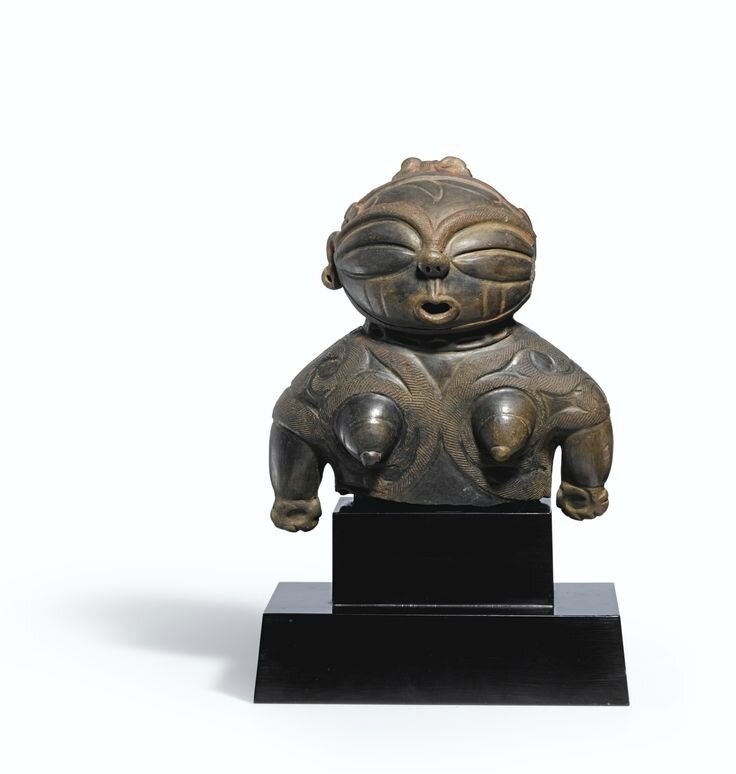




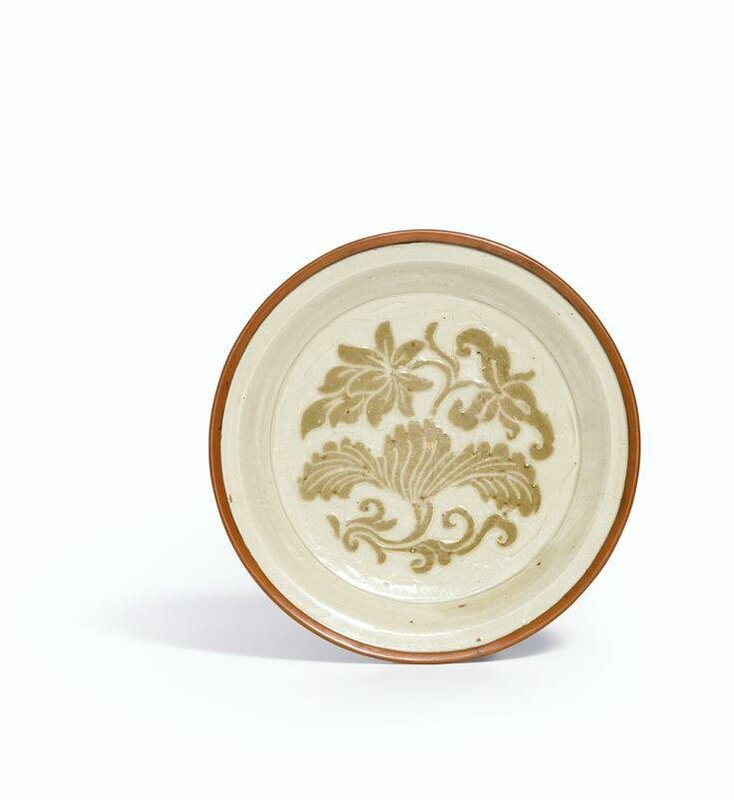



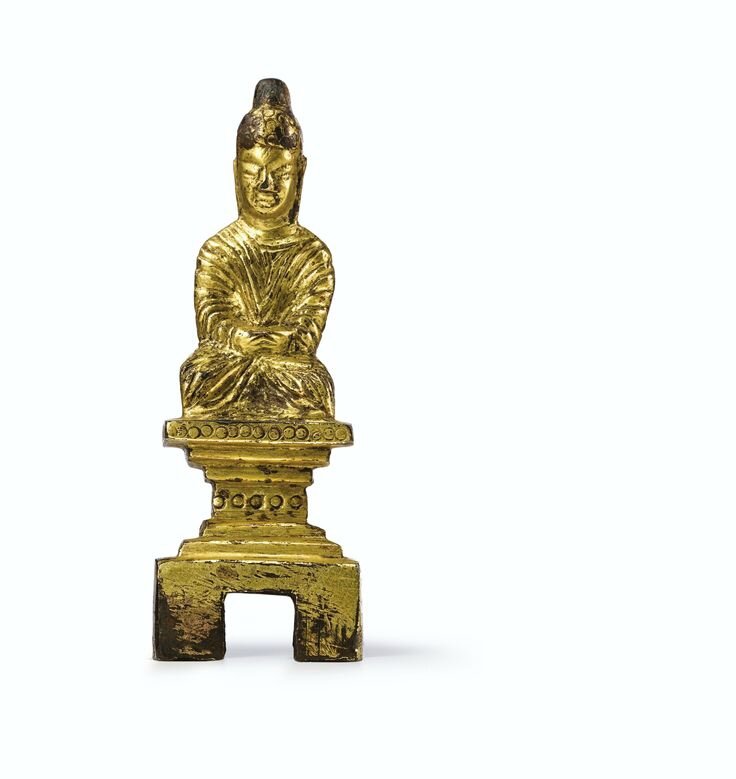




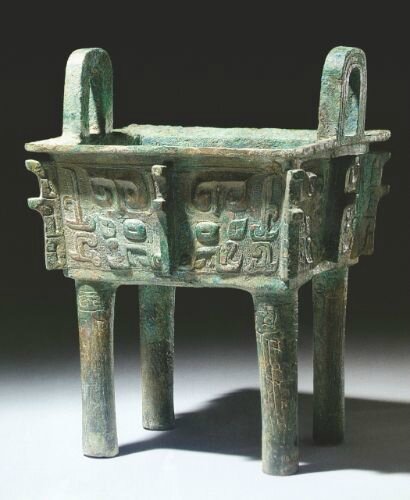

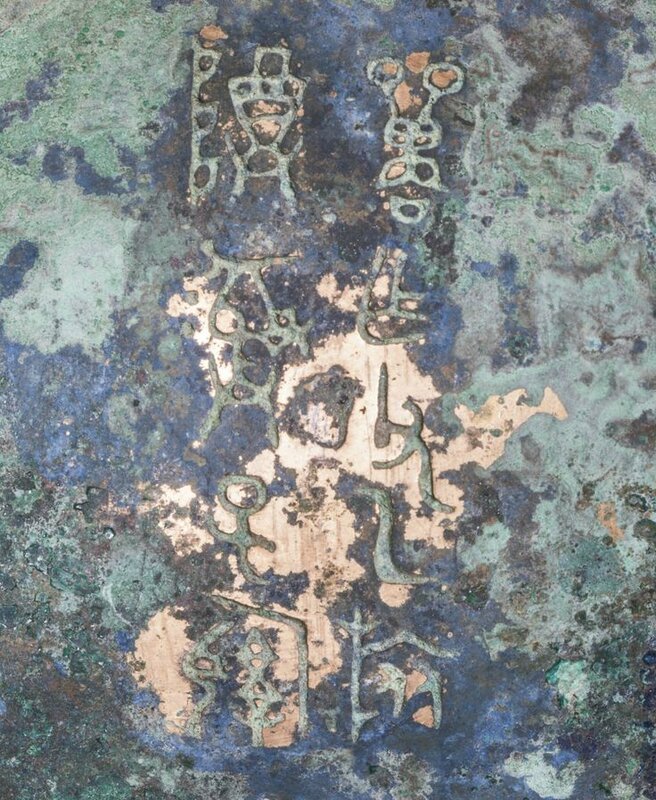

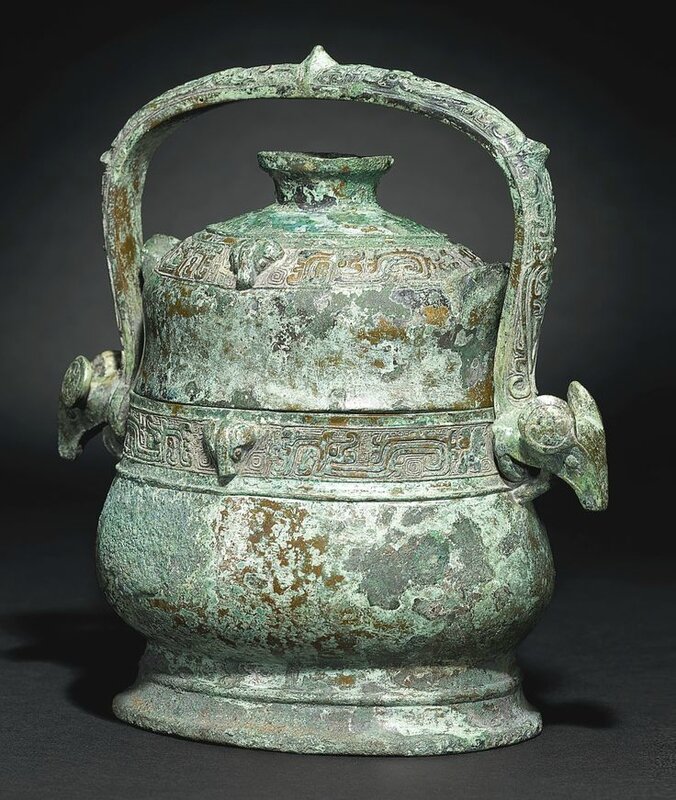



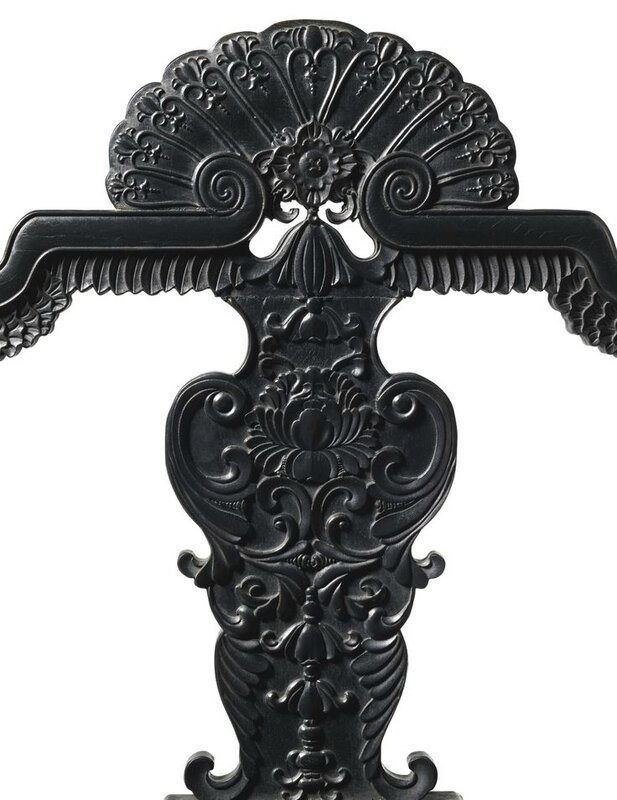


/image%2F1371349%2F20240309%2Fob_020705_110-1.jpeg)
/image%2F1371349%2F20240309%2Fob_113c6e_79-1.jpeg)
/http%3A%2F%2Fstorage.canalblog.com%2F70%2F68%2F119589%2F129847829_o.jpg)
/http%3A%2F%2Fstorage.canalblog.com%2F30%2F56%2F119589%2F129804783_o.jpg)